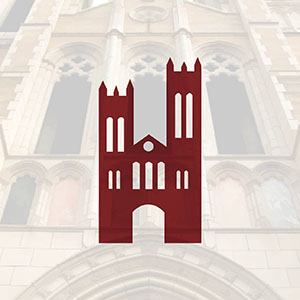 Called General Conference Convenes in St. Louis
Called General Conference Convenes in St. Louis
Starting tomorrow, February 23, our elected United Methodist delegates along with all of our Bishops will gather in St. Louis, Missouri, for a called special session of General Conference, which will be the culmination of the “Way Forward” process begun at the 2016 General Conference. The goal of the meeting is to find a way forward through our disagreements about same-sex marriage and ordination of LGBTQ clergy.
As you may remember, this process began with the Council of Bishops being charged by the General Conference 2106 to help our denomination find “a way forward” from our long-term impasse on matters related to human sexuality in the church. They were asked to conduct a complete examination and possible revision of every paragraph of the Book of Discipline concerning human sexuality and to explore any options that would help to maintain and strengthen the unity of the church.
To do this, the Bishops appointed the Commission on a Way Forward (see our January 18 FUMCFW Enews article, The Commission on a Way Forward: What did they accomplish — and how? )This Commission then underwent a rigorous two-year process to examine this extremely complex issue and possible solutions from all sides and perspectives.
The Council of Bishops worked closely with the Commission, providing feedback, asking questions, reviewing interim progress, and finally, accepting their final report and voting by a nearly 2/3 majority to endorse The One Church Plan of the three alternative plans the Commission developed. (See our January 25 FUMCFW Enews Article, “What Is the Role of the Council of Bishops in finding A Way Forward?” )
On February 6 and 17 , Dr. Tim Bruster, senior pastor, who is the lead delegate from our Central Texas Conference to the Called General Conference, held an info session in Wesley Hall to further explain this process, the pros and cons of the three plans, and why the One Church Plan offers the greatest hope and healing for our denomination because it keeps the denomination together while still allowing for our differences. (View Info Session Here). Dr. Bruster will offer a follow-up info session March 3 in the Sanctuary to share and discuss the result of the Special Session.
“The difference of the One Church Plan over the others is that it gives space for everyone to be together and for people to be in ministry in their particular context,” he says. “We are, after all, a global church. The One Church Plan also gives space for people to continue to be together and to continue to wrestle with this and other issues that will likely arise in the future.” (See our February 15 FUMCFW Enews Article, “Why The One Church Plan Offers Hope and Healing for Our Denomination)
What Can We Do?
Pray for our denomination and those who will lead it forward.
In this week’s Uniting Methodists Newsletter, Bishop Bruce Ough issues a pastoral call for prayer and a patient, grace-filled witness of our faith. Calling upon both I Peter 1:13 (NRSV) to urge us all to “prepare our minds for action; discipline ourselves; set all our hopes on the grace that Jesus Christ will bring . . . ,” Bishop Ough urges all United Methodists to join him this coming week in earnest prayer.
“For weeks and months, I have been praying for the delegates to engage the work of the Special General Conference with hearts of peace—respectful of all persons and viewpoints, and open to listening deeply to the movement of the Holy Spirit in and through one another and the various legislative proposals or “plans,” he writes.
“I thank you for joining me in earnest and unceasing prayer and urge you to continue praying that fresh winds of God’s Spirit will break through and bless The United Methodist Church with yet another season of “making all things new.”
Read Bishop Ough’s Full Article, which also includes sections on Mission, Respect, Theological Reflection, Witness, and Leadership.
Above all, please keep in mind the assurance Dr. Bruster provides at the conclusion of his info sessions: “Regardless of what happens on February 27th, our mission as a church is still the same. We will still be focused on making disciples of Jesus Christ for the transformation of the world and to Love God, Serve People, and Transform Lives. The goals that we set as a congregation through our Focus First process will remain the same.
We will make changes to our physical facilities to create a building that connects our church as never before; we will develop a small group ministry that builds relationships and life-giving groups; we will support and embrace youth ministry as our leading edge; and we will increase our congregational diversity to better reflect the kingdom of God. We’ve said as a church that these are our aspirations — and they still will be after this.”
more denomination news
Terms
Organization: The Church as Connection (from umc.org)
Terms: General Conference, Jurisdictional Conferences, Central Conferences, Annual Conferences, Districts, Charge Conferences and Local Churches
United Methodist leaders often speak of the denomination as “the connection.” This concept has been central to Methodism from its beginning.
The United Methodist structure and organization began as a means of accomplishing the mission of spreading scriptural holiness. Methodism’s founder, John Wesley, recognized the need for an organized system of communication and accountability and developed what he called the “connexion,” a network of classes, societies, and annual conferences.
Today, our denomination continues to be organized in a “connectional” system, which “enables us to carry out our mission in unity and strength” (Book of Discipline, ¶ 701). Every local church is linked to an interconnected network of organizations that join together in mission and ministry, allowing us to accomplish far more than any one local church or person could alone.
Within the connectional structure of The United Methodist Church, conferences provide the primary groupings of people and churches for discernment and decision-making. Wesley described Christian conferencing as a spiritual discipline through which God’s grace may be revealed. At every level of the connection, church leaders and members come together in conversation, or conferencing, to discuss important issues and discover God’s will for the church. The word, conference, thus refers to both the assembly and organization of people as well as the process of discerning God’s call together.
General Conference
As the primary legislative body, General Conference is the only entity with the authority to speak on behalf of the entire United Methodist Church. The General Conference meets every four years to consider the business and mission of the church. An equal number of lay and clergy delegates are elected from United Methodist conferences around the world to decide matters of policy and procedure for the denomination. Learn more.
Jurisdictional Conferences
There are five geographic jurisdictions, or regions, in the United States, which are comprised of eight to 15 annual conferences each. Learn more.
Central Conferences
In Africa, Europe and the Philippines, there are seven geographical regions, called central conferences, each of which is comprised of annual conferences and divided into several episcopal areas. Learn more.
Annual Conferences
The annual conference is a geographical entity, an organizational body (made up of elected lay and clergy members), and a yearly meeting. It is the fundamental body of the church (Book of Discipline, ¶ 11). Learn more.
Districts
Each local church is part of a district, which is an administrative grouping of churches in a geographic area. Learn more.
Charge Conferences and Local Churches
As the visible presence of the body of Christ, the local church is the place where members grow in faith and discipleship, putting their faith into action through ministry in the world. Learn more.
Read on UMC.orgConstitutional Structure (from umc.org)
Terms: General Conference, Council of Bishops, Judicial Council
The United Methodist Church does not have a central headquarters or a single executive leader. Duties are divided among bodies that include the General Conference, the Council of Bishops and the Judicial Council. Each of these entities is required by our Constitution, a foundational document, to be part of our structure, and plays a significant role in the life of the church.
General Conference
The General Conference, the primary legislative body of The United Methodist Church, is the only body that speaks officially for the church. Meeting once every four years to determine legislation affecting connectional matters, it is composed of no fewer than 600 and no more than 1,000 delegates.
Working within the boundaries of the Church Constitution and General Rules, the General Conference defines and fixes the conditions, privileges and duties of church membership; the powers and duties of elders, deacons, diaconal ministers and local pastors; and the powers and duties of annual conferences, missionary conferences, charge conferences and congregational meetings. It authorizes the organization, promotion and administrative work of the church. The General Conference also defines the powers and duties of the episcopacy, authorizes the official hymnal and book of worship, provides a judicial system and procedures, initiates and directs all connectional enterprises of the church and enacts other legislation for the operation of the church. Learn more.
Council of Bishops
The Council of Bishops gives general oversight of the ministry and mission of the church and spiritual leadership to the entire church connection. Composed of all active and retired bishops, the council meets as a group at least once a year.
Bishops are elected by Jurisdictional Conferences and assigned to a particular area, made up of one or more annual conferences. Each bishop provides oversight of the ministry and mission of annual conferences in his or her area and appoints all clergy to their places of service.
Through its Office of Christian Unity and Interreligious Relationships, the council builds and maintains ties with other Christian denominations as well as other faith groups. Learn more.
Judicial Council
As the denomination’s highest judicial body or “court,” the Judicial Council’s nine members, made up of laity and clergy, are elected by the General Conference and normally meet twice a year to consider whether actions of the various church bodies adhere to the constitution and follow the rules outlined in the Book of Discipline.
Their cases are generally referred to them by action of the Council of Bishops, the annual conferences or the General Conference. According to the Constitution, decisions of the Judicial Council are final (Paragraph 57, Article III). Learn more.
Read on UMC.org
